Posts filed under ‘Change’
Highest Rates of Unemployed Young People … The Lost Generation?

We came across this article and wanted to share with you. The results of some of these statistics are quite stunning– that our nation’s young people are currently at the highest rate of unemployment (54% of people aged 16-24 in the US for the month of September were unemployed!) and the devastating consequences this has and will have upon a generation of Americans, as well as the upon our nation. We hope this article will bring to light this emerging crisis and we can together think about solutions to counter-act what is occurring. Our youngest workers are our future and future leaders, and we need to nurture, and employ them, for the health of our nation!
From Newsweek, by Peter Coy:
“Bright, eager—and unwanted. While unemployment is ravaging just about every part of the global workforce, the most enduring harm is being done to young people who can’t grab onto the first rung of the career ladder.
Affected are a range of young people, from high school dropouts, to college grads, to newly minted lawyers and MBAs across the developed world from Britain to Japan. One indication: In the U.S., the unemployment rate for 16- to 24-year-olds has climbed to more than 18%, from 13% a year ago.
For people just starting their careers, the damage may be deep and long-lasting, potentially creating a kind of “lost generation.” Studies suggest that an extended period of youthful joblessness can significantly depress lifetime income as people get stuck in jobs that are beneath their capabilities, or come to be seen by employers as damaged goods.
Equally important, employers are likely to suffer from the scarring of a generation. The freshness and vitality young people bring to the workplace is missing. Tomorrow’s would-be star employees are on the sidelines, deprived of experience and losing motivation. In Japan, which has been down this road since the early 1990s, workers who started their careers a decade or more ago and are now in their 30s account for 6 in 10 reported cases of depression, stress, and work-related mental disabilities, according to the Japan Productivity Center for Socio-Economic Development.
When today’s unemployed finally do get jobs in the recovery, many may be dissatisfied to be slotted below people who worked all along—especially if the newcomers spent their downtime getting more education, says Richard Thompson, vice-president for talent development at Adecco Group North America, which employs more than 300,000 people in temporary positions. Says Thompson: “You’re going to have multiple generations fighting for the jobs that are going to come back in the recovery.”
What’s more, the baby boom generation is counting on a productive young workforce to help fund retirement and health care. Instead, young people risk getting tracked into jobs that don’t pay as well, says Lisa B. Kahn of the Yale School of Management. That would mean lower tax payments for Social Security and Medicare.
Only 46% of people aged 16-24 had jobs in September, the lowest since the government began counting in 1948. The crisis is even hitting recent college graduates. “I’ve applied for a whole lot of restaurant jobs, but even those, nobody calls me back,” says Dan Schmitz, 25, a University of Wisconsin graduate with a bachelor’s degree in English who lives in Brooklyn, N.Y. “Every morning I wake up thinking today’s going to be the day I get a job. I’ve not had a job for months, and it’s getting really frustrating.”
ANXIETY AND FEAR
The case for action is strong. Governments should act now before the damage gets even worse, argues David G. Blanchflower, an economist at Dartmouth College who recently served on the Monetary Policy Committee of the Bank of England. He’s not sure what will work, but he favors trying everything from subsidizing education and training to cutting minimum wages for young people and trainees. “It has to be now,” says Blanchflower. “It can’t be in two years’ time.”
Most analyses of youth employment focus on people aged 16 to 24, which includes everyone from high school dropouts to wet-behind-the-ears college grads. But in this era of rising educational requirements, some people don’t start their careers until their mid or late 20s—and these young college grads are taking it on the chin as well.
According to a BusinessWeek analysis, college graduates aged 22 to 27 have fared worse than their older educated peers during the downturn. Two years ago, 84.4% of young grads had jobs, only somewhat lower than the 86.8% figure for college graduates aged 28 to 50. Since then, the employment gap between the two groups has almost doubled.
Robert I. Sutton, author of The No Asshole Rule, a management book, says he’s seeing “more anxiety and fear” among his students at Stanford University.
For more go here… http://www.businessweek.com/magazine/content/09_42/b4151032038302.htm
Women advancing in Economics
We love to highligh accomplishments of women in leadership, and today’s news is exciting! The first women ever to win the Nobel prize for economics was awarded today.
From the BBC:
“Elinor Ostrom has become the first woman to win the Nobel prize for economics since it began in 1968.
Ms Ostrom won the prize with fellow American Oliver Williamson for their separate work in economic governance.
The Nobel Memorial Prize in Economic Sciences is the last of the six Nobel prizes announced this year. Since 1980, it has gone to Americans 24 times.
Last Friday, US President Barack Obama was awarded the Nobel Peace Prize – though this aroused some controversy.
BBC economics editor Stephanie Flanders said the judges had rewarded work in areas of economics whose practitioners’ “hands were clean” of involvement in the global financial crisis.
The economics prize was not among the original Nobel awards, but was created in 1968 by the Swedish central bank in Alfred Nobel’s memory.
|
|
The Royal Swedish Academy of Sciences cited Professor Ostrom, who teaches at Indiana University, “for her analysis of economic governance,” saying her work had demonstrated how common property could be successfully managed by groups using it.
She told Swedish television that she was “in shock” at being the first woman to clinch the award, adding winning had been a “great surprise”.
Meanwhile, Professor Williamson, the academy said, developed a theory where business firms served as structures for conflict resolution.
The University of Berkeley California academic has argued that hierarchical organisations such as companies represent alternative governance structures, which differ in their approaches to resolving conflicts of interest.
“Over the last three decades, these seminal contributions have advanced economic governance research from the fringe to the forefront of scientific attention,” the academy said.
The pair will share the 10-million Swedish kronor (£910,000; $1.44m) prize.
Last year, American academic Paul Krugman won the prize, in recognition of his analysis of trade patterns and where economic activity takes place.”
To read more…http://news.bbc.co.uk/2/hi/business/8302662.stm
Women Drive the World Economy. But Companies are Doing a Poor Job Serving Them

In the Harvard Business Review’s September issue, a fascinating, if not slightly shocking study result was published: As a market, women represent a bigger opportunity than China and India combined, but companies doing a poor job of serving them.
“Women now drive the world economy. Globally, they control about $20 trillion in annual consumer spending, and that figure could climb as high as $28 trillion in the next five years. Their $13 trillion in total yearly earnings could reach $18 trillion in the same period. In aggregate, women represent a growth market bigger than China and India combined—more than twice as big, in fact. Given those numbers, it would be foolish to ignore or underestimate the female consumer.
And yet many companies do just that, even ones that are confident they have a winning strategy when it comes to women. Consider Dell’s short-lived effort to market laptops specifically to women. The company fell into the classic “make it pink” mind-set with the May 2009 launch of its Della website. The site emphasized colors, computer accessories, and tips for counting calories and finding recipes. It created an uproar among women, who described it as “slick but disconcerting” and “condescending.” The blogosphere reacted quickly to the company’s “very special site for women.” Austin Modine of the online tech publication The Register responded acidly, “If you thought computer shopping was a gender-neutral affair, then you’ve obviously been struck down by an acute case of female hysteria. (Nine out of ten Victorian-age doctors agree.)” The New York Times said that Dell had to go to the “school of marketing hard knocks.” Within weeks of the launch, the company altered the site’s name and focus. “You spoke, we listened,” Dell told users. Kudos to Dell for correcting course promptly, but why didn’t its marketers catch the potentially awkward positioning before the launch?
Most companies have much to learn about selling to women. In 2008 the Boston Consulting Group fielded a comprehensive study of how women felt about their work and their lives, and how they were being served by businesses. It turned out there was lots of room for improvement. More than 12,000 women, from more than 40 geographies and a variety of income levels and walks of life, responded to our survey. They answered—often with disarming candor—120 questions about their education and finances, homes and possessions, jobs and careers, activities and interests, relationships, and hopes and fears, along with their shopping behavior and spending patterns in some three dozen categories of goods and services. (You can learn more about the survey and take an abridged version of it at www.womenspeakworldwide.com.)
We also conducted hundreds of interviews and studied women working in 50 organizations in 13 fields of endeavor. Here’s what we found, in brief: Women feel vastly underserved.
Despite the remarkable strides in market power and social position that they have made in the past century, they still appear to be undervalued in the marketplace and underestimated in the workplace. They have too many demands on their time and constantly juggle conflicting priorities—work, home, and family. Few companies have responded to their need for time-saving solutions or for products and services designed specifically for them.”
To read more go here:
http://hbr.harvardbusiness.org/2009/09/the-female-economy/ar/1
If you are a woman, do you agree: do you feel under-served, ignored, or undervalued by companies? If you are a man, what are your thoughts? And what are the opportunities that you now see, (as a consumer? as a leader within a company?)
Putting Values First– Procter & Gamble’s New CEO Charts a New Path
This July, P&G’s new CEO Bob McDonald took office, and since, has launched the company’s new mission… to be guided by Values, Principles & Purpose first. He believes, and teaches his company to believe in putting people –heart, mind, body– first and from this, profits will come. This is of course, a refreshing (and rare) outlook in light of the scandals, cut-throat capitalism, and unethical business dealings we as a nation have seen unfolding over the last few years… quite a sobering commentary on our society that this type of model of actually caring about people, is the exception and not the norm.
Envision a nation or society where the goal or main concern was caring about other human beings–caring about their wellbeing, caring about the poor, caring about helping others vs putting self first to make an easy profit. If this were the case, there would most likely be no Enron, no mortgage crisis, probably no economic downturn at all.
Of course, P&G still cares about making a profit, as the measurement or goal outcome from putting hearts and people first is, the bottom-line– increasing the dollars spent by consumers. Still, to learn about, and hopefully model our own companies after the P&G model is crucial and valuable to truly changing the upside-down values of our society’s companies.
P&G’s identiftied core values are…Integrity, Leadership, Ownership, Passion for Winning, Trust. Do you or does your company have core values that are followed? What about a purpose? To read more about P&G’s values and mission, go here: http://www.pg.com/company/who_we_are/ppv.shtml
And a good article about P&G’s value-led system by Rosabeth Moss Kanter that is worth reading can be found here: http://blogs.harvardbusiness.org/kanter/2009/09/fall-like-a-lehman-rise-like-a.html Although,there was an example of P&G’s values-put-first given here where Kanter recounts P&G”s work in Brasil, where, spurred by a slipping market, P&G employees took note of some of the realities of Brazilian families’ lives and noted that they spent too much time washing cloth diapers by hands, so of course, introduced disposable diapers to the consumers. While I see the value in saving time, (and increasing P&G’s Brasil market profit), what about the enormous environmental down-side of changing an entire market from cloth to plastic diapers? I was just wondering about if this really was a positive change for Brasil’s families and country, or, if this just appeared to be a good change but long-term would have negative consequences for the environment, health and well-being of Brasil and its people. When a company has such far-reaching impact on whole groups and nations, there must be thoughtfulness in every choice made. Your thoughts?
Five “Laws of the Mind”: Words of Wisdom from the Past
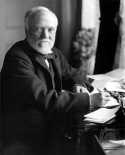 By Joyce Friel
By Joyce Friel
Andrew Carneige’s impact on the US is still evident in many ways today. In particular, the great buildings he provided for cultural advancement as a way of giving back to the community. He had 5 ‘laws of the mind’ he used to guide his focus and, consequently, drive his results. They are just as appropriate today as they were in Carneige’s time.
They are:
1. Fix your goal firmly and precisely in your mind. Precision is key.
2. Determine what you intend to give in return for reaching your objective. In his case, it was often buildings and public works. So clearly giving back was a key ingredient to his success, it wasn’t just a nice thing to do with his wealth. When you give back, others continue to use your services and products so a self-fulfilling prophecy gets established.
3. Establish specific dates when you intend to have achieved your goal.
4. Create a definite plan and commit it to writing.
5. Read your plan twice a day. Keep it top of mind. What you focus on is what you get.
Great words to live. And there is tremendous evidence that Carneige’s formula works. What is the goal you want to achieve. How about using this 5-step plan to make it become a reality!
America’s management practices: Remember…you can’t change organizational behavior without changing human behavior!
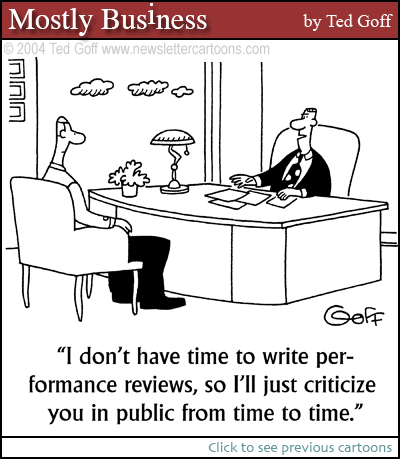 The mainstream seems to be finally catching on… After decades of unchanging business management practices that American businesses have, by habit, been repeating, (layoffs, performance reviews etc.) we see now that these methods are at best unhelpful, and at worst, destructive to employee motivation. What changes organizations? Changing human behavior!
The mainstream seems to be finally catching on… After decades of unchanging business management practices that American businesses have, by habit, been repeating, (layoffs, performance reviews etc.) we see now that these methods are at best unhelpful, and at worst, destructive to employee motivation. What changes organizations? Changing human behavior!
An interesting list of 13 common, habitual practices our nation’s management uses that don’t work:
From Business Week, by Aubrey C Daniels, to read full article go here: http://www.businessweek.com/managing/content/aug2009/ca20090811_861931.htm
With executives under fire for driving their companies into the ground—and taking the economy with them—it’s time for a managerial paradigm shift that focuses on the root of all booms and busts: individual behavior. Many time-honored management practices, such as layoffs, yearend bonuses, and automatic pay raises, actually reward employees’ bad habits and punish good behavior, often with devastating results.
These practices stem from theories of performance that have little to do with the science of learning. As such, they result in many mistakes initiated by senior leadership at great cost. They’re endorsed for the best of reasons but fail to lead to the desired result.
So why do so many organizations continue to embrace faulty practices? My 30 years of experience with Corporate America have led me to believe most business leaders are trained in the math of balance sheets, not the science of human behavior. They don’t understand that you can’t change organizational behavior without changing human behavior. Only when managers understand the basic principles of behavioral science and apply them skillfully will they realize the full potential of their employees and their organizations.
A Chance for Change
While management in general is proving challenging today, there is a silver lining to this current economic crisis: It provides a rare opportunity for managers to rethink and reform the way they run their organizations, using an approach grounded in science and research rather than in dubious habits. Businesses have been wasting time, funds, and resources on the same tired approaches for years. This crisis can actually provide us with a chance to start fresh and set in motion a sea change in the way we manage behavior and performance.
Please see a slide show featuring 13 universally used, but ultimately ineffective, management practices—and prescriptions for how to change them.
212 Degrees to Boiling
We wanted to pass along this very short inspirational movie/video… at 211 degrees water is HOT, but add one degree, and at 212 degrees, water boils, produces steam and can produce enough energy to run a train! This is worth watching… it takes EFFORT, ENERGY and WORK to be great, produce results, make a difference… to change your life!
Company Case Study: New P&G CEO Bob McDonald on How to Improve Lives for People Who Cannot Afford Products
Here is a great case study example of how P&G found a way to improve lives and save water for consumers in the Philippines with the innovation of a product called Downy Single Rinse:
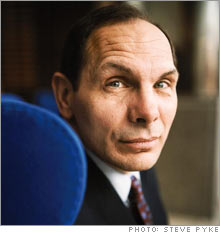 From Forbes: On the Call: P&G CEO Bob McDonald
From Forbes: On the Call: P&G CEO Bob McDonald
Associated Press, 08.05.09,
“The Procter & Gamble Co. uses a slogan that its consumer products touch and improve lives. Traditionally, that’s meant with “new and improved” innovations of Tide detergent and Crest toothpaste and other products.
But the company is pushing to increase sales in developing countries where per capita incomes are far below U.S. consumers, in a global recession. Bob McDonald, who took over July 1 as CEO, discussed the challenge in P&G’s fourth-quarter earnings conference call with analysts.
QUESTION:
I know you want to change lives, but what if people can’t afford to change their lives?
RESPONSE:
One of the things we’ve learned is that, in order to improve the lives of people that tend to be toward the bottom of the economic pyramid, you have to innovate for the best consumer experience for those people. It’s not a matter of trickling down higher-tier technology.
A great example of that is Downy Single Rinse, which we began developing in the Philippines some years ago. This was an opportunity for Filipino consumers who rinse their clothes five times with clear water in order to get rid of the soap, to use a product that added fragrance, some degree of softness, but also, importantly, sequestered the suds that were in the water and allowed them to go from five rinses to one.
And basically, the product pays for itself because of the water that they save.”
Working With/For an Ineffective Boss
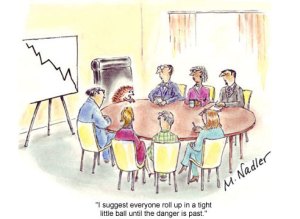 by Joyce Friel
by Joyce Friel
Micro managing, asking the impossible, narcissistic, requesting actions that are on the verge of being unethical, blocking team effectiveness, and on and on. Sound familiar? For some of you this is all too familiar and very frustrating. The boss from Hell, you think. What to do?
 There are many contributing factors and a pat answer that is easy to give in this short blog is, of course, not the only solution and maybe not even the right one, but here are some thoughts that may be useful to you if this situation describes your daily worklife.
There are many contributing factors and a pat answer that is easy to give in this short blog is, of course, not the only solution and maybe not even the right one, but here are some thoughts that may be useful to you if this situation describes your daily worklife.
The boss from Hell is often behaving the way they are because they don’t know how to perform otherwise. They don’t know how to produce results in a more effective way. While it may not look right to you and it may seem downright wrong, they may be doing the best they know how to do.
So some things you can do to help yourself, them and your team be effective and ease the frustration are to:
* Be the example of what should be done – help them learn vicariously by your example
* Do everything you can to help your boss and your team be successful (short of doing things that they request you to do that may be unethical). The boss wants to be successful – help them deliver results and they are more likely to stay off your case and out of your way.
* People do what they do because of what happens to them when they do it…so the boss must be continuing their frustrating behavior because their superiors believe they are delivering results. After all, that is ultimately the bottom-line definition of success in almost any organization.
* Analyze to figure out what ‘reward’ the boss seems to be getting as a result of their behavior. They are being reinforced somehow or they wouldn’t continue. (Are they getting attention of others? Are they causing the team to work harder to produce results? Are they getting promotions? Are they admired for some reason in their peers eyes?)
If all else fails and you’re ready to take some risks…
* If the entire team is ready to take some action, then collectively they may be able to discuss the situation with your HR department or a person in a higher position, but do this very cautiously and be prepared for any consequences that may occur as a result. As I mentioned, likely people in higher positions know of this person’s behavior and continue to leave them in their position because of the results they produce. That doesn’t make it right, but it does explain the situation.
* You can transfer to a different position within the organization.
* You can find effective behavioral change management help for the person by suggesting an executive coach might be good for everyone on the team and as a result they get assistance also.
They will not change until the consequences of their actions change and until they become aware of the impact they are having on others. And even at that, they will only change if they want to.
You can agonize over and be very frustrated with the behavior of others, but you cannot make them change and you cannot own their behavior. The only thing you can control is your own reaction to their behavior. Helping someone else always started with examining our own behavior first.
Learning to Lead
 Leaders learn through experience.
Leaders learn through experience.
One of the key characteristics of leaders is that they are learners. This can be readily discerned when interviewing an espoused leader by asking the question, “Tell me about a time you failed as a leader and what you learned from it?”
If they can’t identify a time, be cautious. The reality of their leadership capability may be only in their mind and not exhibited in their behaviors.
Experienced leaders who have been tested in the crucible and made it through can easily remember examples of where they have not been effective or failed in their leadership. And, they can share with you what they have intentionally done or changed to adjust for the failure based on their learning. These changes will usually be in their beliefs about people or in their behaviors when leading people.
I well recall an instance when I first started in supervision and had a group where significant change was required to expand the departments capacity for work. I was to lead this change and managed to get through it although I lost the department’s best performer. I attributed this lose to her lack of interest in using the new technology we had implemented.
Months after the change a friend of mine suggested that people in this department felt I was not fair, too pushy and caused the person to leave based on the unfair expectations I had placed on her for work output. This feeling was still being harbored in the group today.
In short, I asked the group to hang around after work one evening and asked them their thoughts regarding what I had heard. What a great learning experience! I had been a lousy leader, even though I got the job done.
I called the person who left and apologized for my poor behavior, and she agreed to come back to work for us. From that point on, I led in a much more open, involving and trusting manner where people were asked for input, allowed to volunteer for assignments, could suggest better ways to accomplish tasks, etc.
Never again did I think I knew all the answers, and never again did I take advantage of top performers by overloading them with work.
Looking back, it doesn’t seem like much, but today, I know it has shaped my leadership style and techniques as much as any failure I have had since that time.
What leadership failures have you learned from? (BTW – this could be called failing forward if it helps as a memory tickler)
Chad
Power Leaders – Flash in the Pan
 Want something done fast with no concern for sustainable outcomes?
Want something done fast with no concern for sustainable outcomes?
Don’t care about losing people because the business will go under if the new direction is not launched?
Assign a Power Leader to make things happen.
I’m not an advocate of Power Leaders but can envision, and have experienced situations where there is need for such a person. They are normally brought in from outside the organization and stay only as long as it takes to make the turnaround happen, or initiate the desired change.
What do they do well?
- They engage others in a vision for change, although they totally control the change plan.
- They build a structure and plan for achieving the envisioned outcome.
- They have a focused, relentless determination to succeed.
- They believe that people are important only as long as they are contributing.
- Not always, but frequently, they are self-serving and compensated via a bonus or improvement sharing compensation package that benefits them tremendously for success.
What do they do poorly?
- They don’t build sustainable solutions or systems.
- They ravage people who don’t move fast enough or perform to plan.
- They destroy cultural components aligned with a people-focus.
- They create fear in the workforce.
- They never have to live with their carnage.
So why do businesses hire them?
- To survive.
- To stop the flow of cash out of the organization.
- To generate fast revenue for the organization.
- To transition the organization so a long-term leader can be found.
Ever run into one of these Power Leaders in your past? If so, what are your thoughts?
Chad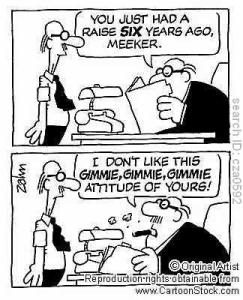
How you respond to the economy is a CHOICE
 I believe there are three key measurements for today’s uncertain economic environment.
I believe there are three key measurements for today’s uncertain economic environment.
1. Accelerating pace of change.
2. Our key response is fear, anxiety, insecurity, which according to Bright Side’s research and interviews is increasing.
3. The key sustainable advantage is our expanded capacity to learn/unlearn/relearn in the moment every moment.
Today’s recession reminds me of experiences I had over 25 years ago when I developed Bright Side’s personal change-leader model to expand my own capacity and the capacity of others, their teams, their organizations to be more equipped to lead toward the future dreams and desired business outcomes. My past experiences, both my past positive experiences and my past negative experiences continue to be triggered for me today and could limit or minimize the impact that I personally can and want to have and Bright Side can and wants to have.
And how I respond to those triggers is a choice: Yes, the recession is knocking on my door and I am choosing to not answer it.
The personal leader model is as relevant today as when I lost my job in the machine tool industry during the early 1980’s. Not only did I lose my job, I watched an entire industry collapse. I, along with many other Americans, was stuck in a view of arrogance, ‘Ohio is the machine tools capitol of the world, other countries make junk.’ After traveling to Japan in 1981, working with the Father of Quality, Dr. W. Edwards Deming, I began to wonder, have an insight, that perhaps I was experiencing the early side of a trend and I could ignore it or learn about it and take action to embrace and lead from that trend.
That failure became the impetus for the Bright Side model…
Personal Productivity
Personal productivity is something toward which we all strive. We want to be able to accomplish more in a shorter time span and focus longer so we can strategize and implement better. We want to rid ourselves of all the small distractions and time-wasters that always seem to add up to more than we think. Before we know it, it’s 2 pm and we haven’t accomplished half of what we needed to that day.
Those of you wishing there were 25 hours in the day should listen up, because personal productivity is attainable. All it requires is a mental shift and change in daily behaviors and habits. Sound difficult? There is a simple method to obtain it if one is armed with an open-to-change attitude.
When Bonnie Curtis, Vice President of Global Oral Care at Procter & Gamble, charged her team the task of eliminating one hour per day of distraction and inefficiency during the merger with Gillette, she knew she was not assigning an easy task. Changing behaviors is something that takes time and dedicated repetition.
Curtis knew she wanted to change her team, but she also realized that she wanted to change how she personally worked within her team. For her, it was more than eliminating one hour of inefficiency per day. She took a look inside and objectively observed her actions and methods for work.
She wasn’t being as effective, she noted, if she held a grudge toward a person or kept a mental tally of errors. Her personal barrier against a colleague would prevent her from moving forward on a project or even talking to the person.
Curtis was also spending less time with her family. She consistently missed dinner, was absent at important sporting games and events for her children, and was distracted on the weekend. She wanted to be more present with her family and she knew something needed to change, which was Curtis’ first step in the right direction. By forming an awareness around what needs to be done, she was on her way toward personal change.
Curtis needed to release any tension she felt about her current state so she could reach her personal ideal future state: an 8-5 day that allowed her time with her family in the evenings and during the weekends. She needed to bridge the gap between her current state and ideal state. Once she formed an awareness around these dormant grudges, Curtis plowed forward and was able to work more effectively.
She replaced her personal barriers with optimism and the idea that she is a bold change leader, able to move her team forward but still keep her personal boundaries more intact. She built upon her own inner tenacity and launched forward, running herself through the Bright Side model anytime she needed to rid herself of barriers and distractions.
What about you? What will it take for you to rid yourself of personal distractions and inefficiencies?
The key to remember here: form an awareness on your current state, release any tension, replace it with the ideal, future state, and build upon it so that your change is sustainable and real.
-Shannon
Executive Interest in an interview about the impact of fear on business /results?
Hi, this is Donna Rae.
I am interested in identifying executives / managers who are who would be interested in scheduling an interview with me about the impact of fear on performance within your organization. The interview can be done over the telephone, is confidential, and expands the data we are collecting on fear and productivity.
I will provide a copy of the report to you and I will also provide coaching to you on strategic methods for creating a fearless organization.
We are all facing and feeling the impact of this intense, unpredictable, unstable climate. Identifying and removing fear barriers allows organizations and individuals to be agile, to be nimble and to adapt… boldly facing and moving through today’s challenges!
We can overcome fear, and thrive together!
Please either call, email me, or post a comment and we will set up a time to interview you.
donna rae
Strategic Planning is relevant to the context
Posted by chad cookMost of us feel very comfortable with a pre-economic downturn model for strategic planning.
Some corporate C-suite executives thinking is still at the level of the business entity.
Some corporate C-suite thinking is not yet broad enough to encompass a singular corporate entity concept in context and scope.
Some people are far too controlling around the “what” is to be focused on, and limit the scope of their direct reports accordingly.
Sometimes the “How” to get work accomplished is neglected in the push to get the “What” done.Leaders are still trusting their company’s future to plans based on past history.
Corporate entity scope and context are significantly different than internal divisions/groups even if these internal entities are larger than most free-standing companies.
Leaders who control the strategic planning process too tightly are doing a disservice to their direct reports career development.
Fear of the unknown causes some leaders to limit others view of the possibilities and options present even in difficult times.
The discipline to balance the “What” and “How” of performance is understood and valued by only the most experienced top leaders.What do you think??
Chad
I was working with an executive last week to prepare for a strategic planning session to update a plan that had been initially assembled in February.What I learned and pondered after a couple of pre-planning sessions was:
Sometimes we have a solid grasp of “what” we want to do, to the exclusion of considering alternatives.
My awareness (some new, some renewed) from this encounter were:
As Chris Argyris would say, “Teaching Smart People How to Learn” is a tough job.
Recent Comments